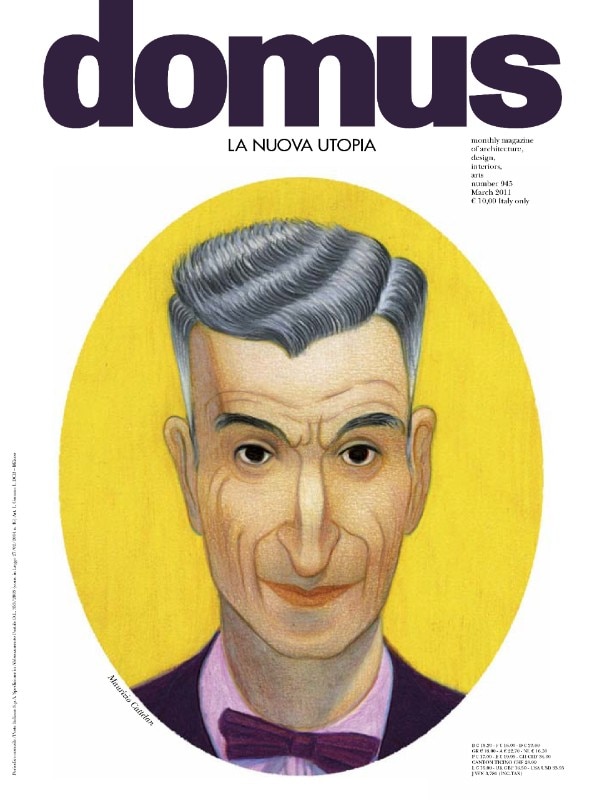Maurizio Cattelan is a regular when it comes to scandals. His entire production – from the monumental middle finger in Piazza della Borsa, Milan (L.O.V.E., 2010), to the golden toilets for the MoMA in New York (America, 2016) and the banana taped to the wall (Comedian, 2019) – has been accompanied and followed-up by controversy, which spread even beyond the safe borders of the art world.
To such an extent that the viral buzz, the media upheaval, and the echo generated on Instagram and other social media, constitute a fundamental element of both Cattelan's devilish charisma and of his own work. The artist is no longer a virtuoso of technique but of communication.
This time, though, it was not him to ignite a scandal. The artist, together with his gallery owner Emmanuel Perrotin and the Parisian institution La Monnaie de Paris, is now heading to court over an intellectual property issue. A trial that promises to be epochal, because it questions the essence of a whole world, that of contemporary art, which is based upon the separation of concept and technique. The case arose from a claim made by the French sculptor Daniel Druet, twice awarded with the prestigious prix de Rome, but little known to the mainstream public.

Druet – after brilliantly working on the reproduction of hyper-realistic wax statues for the Grevin museum in Paris and creating a bronze bust of President Mitterand – produced a series of sculptures for Cattelan, which have become true hallmarks of the artist's portfolio. These include icons such as Pope John Paul II crushed by a meteorite (La Nona Ora, 1999), the famous praying infant Hitler (Him, 2001), the bust of Stephanie Seymour (Trophy Wife, 2003), John F. Kennedy in his coffin (Now, 2004), the children hanged to a tree (2004) and the numerous clones of the artist himself, coming in different postures and situations. All works that have promptly attracted the attention of the newspapers, igniting debates and tensions, only to be then sold at mind-blowing prices. Now Druet is claiming his author status.
if Druet wins, all artists will be affected, and it will be the end of contemporary art in France…
According to the statements made to the newspapers, not only has the contractual situation never been transparent, but the instructions given by the artist have always been extremely vague, resulting in the sculptor having to work with a consistent margin of invention. If on the one hand Cattelan and his gallery owner pointed out that the sculptor's service was regularly paid, on the other Druet claims that his name has never been associated to Cattelan nor mentioned in relation to the creative process, hence affirming his role of author and not of simple craftsman. It was indeed with a symbolic act that in 2018 he started the war against Cattelan, showcasing in a Parisian gallery a sculpture representing the artist himself peeking out of an egg shell, “like a bird stealing the nest of others”. However, Druet later decided to bring the quarrel to court.
The first hearing of the trial, on May 13, was highly anticipated, not only because of the fame of the personalities involved, but mostly because it touches upon one of the cornerstones of the contemporary art system. As Perrotin explains, “if Druet wins, all artists will be affected, and it will be the end of contemporary art in France…” Nothing less. The Paris court judges now find themselves deliberating on the authorship of works produced within the elusive context of what critics define “the conceptual regime of art”.
Since Duchamp, who had attributed the status of work of art to mass-produced objects, art has emancipated itself from technique, and even from aesthetics, to affirm itself purely as an idea and a concept. This unprecedented form of legality gives artists the power to rule any object or fragment of the world as art, even if not directly crafted by him. In virtue of this principle Cattelan, author of the concepts behind the works, claims his intellectual property. Druet, instead, author of the objects, intends to defend the traditional view of the artist as a craftsman and master of the matter. This is the Gordian Knot that the Paris court now needs to undo. Needless to say, it is understood that the arts and culture world, as well as the market, are holding their breath: it is not simply a matter of settling a dispute, but of deliberating on the state of contemporary art.
Opening image: La Nona Ora (The Ninth Hour), 1999, Maurizio Cattelan, sculpture of Daniel Druet, Guggenheim of New York, 2011


